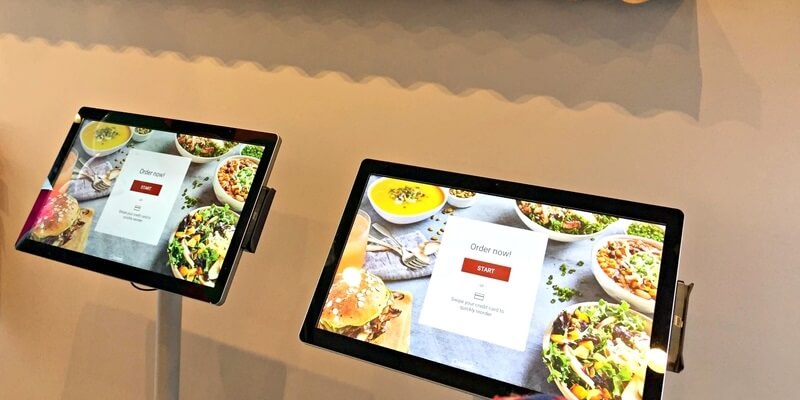
For many years customers have grown accustomed to choosing their favorite meals at counters or placing their food orders on the phone with friendly restaurant staff. In today’s modern society, a larger number of dining establishments are now moving toward using a self-service kiosk as way to increase efficiency and offer convenience to the guests.
So how do you remain above average? How do you differentiate yourself along with the millions of Fast Casual or QSR businesses out there?
Picture This Scenario
I think it’s safe to assume that we have all experienced the situation below once or twice.
You forgot to bring your lunch to work this morning. There is a wave of meetings waiting for you at the office and you have approximately 20 minutes to grab something and quickly devour it before you head back to the office. The go-to lunch spot you love has an endless line of customers wrapped around the counter. You aren’t able to look for somewhere else, there’s just simply not enough time.
But wait… you see a sign of hope in the corner.
It’s a self-serve kiosk waiting patiently to take your order. You now jump with joy and hurry to place your order with a big smile on your face.
Wouldn’t that be great?
To Kiosk or Not to Kiosk
The self-ordering kiosk at restaurants and self-checkout lines at the grocery stores have something in common. The quickness, comfort and convenience of being able to place an order, pay, and leave or stay is what customers want. The main reason why restaurant businesses are purchasing self-checkout kiosks is to make the ordering process more efficient. However, the approach isn’t to hire less humans but to employ them in other roles that can enhance the customer experience.
For example, with fewer cashiers working on cash registers, there will be more staff to prepare orders more quickly to cut down wait times. Additionally, workers can walk around the floor and initiate conversations with guests to make sure they are satisfied. A kiosk can also help with order precision and customization; you can simply add or delete ingredients and make specifications for how you’d like your food to be prepared.
On top of all that, customers can now dine at their favorite restaurants and get the best of both worlds. By still having a real customer experience, workers can share suggestions, answer questions and provide friendly service. On the other hand, a self-service kiosk offers speedy service which allows guests to personalize their order at their own pace, browse the menu without pressure, or grab and go in a hurry.
What’s the Price for a Kiosk?
Anytime you decide to add technology to your establishment, it involves an up-front investment, and that might be something that restaurant owners cannot afford. A typical cost per kiosk (which includes the display, scanner, credit card reader, and receipt printer) can be about $5,000. The cost can increase depending on what type of customization restaurants decide to add. Software tech companies like Linga, offer kiosk system leasing options that make adding a kiosk easy even if you don’t have the money upfront.
Final Thoughts
If you are looking to invest in technology the time may never be better. With many options to upgrade, any effort restaurants make to keep customers happy is worth it. Adding a kiosk can instantly boost sales, improve customer experience, and raise staff morale all at the same time. So, what are you waiting for? Find out if a kiosk is the right choice for your restaurant type.

